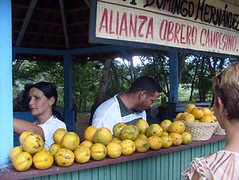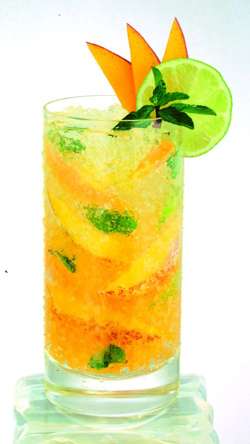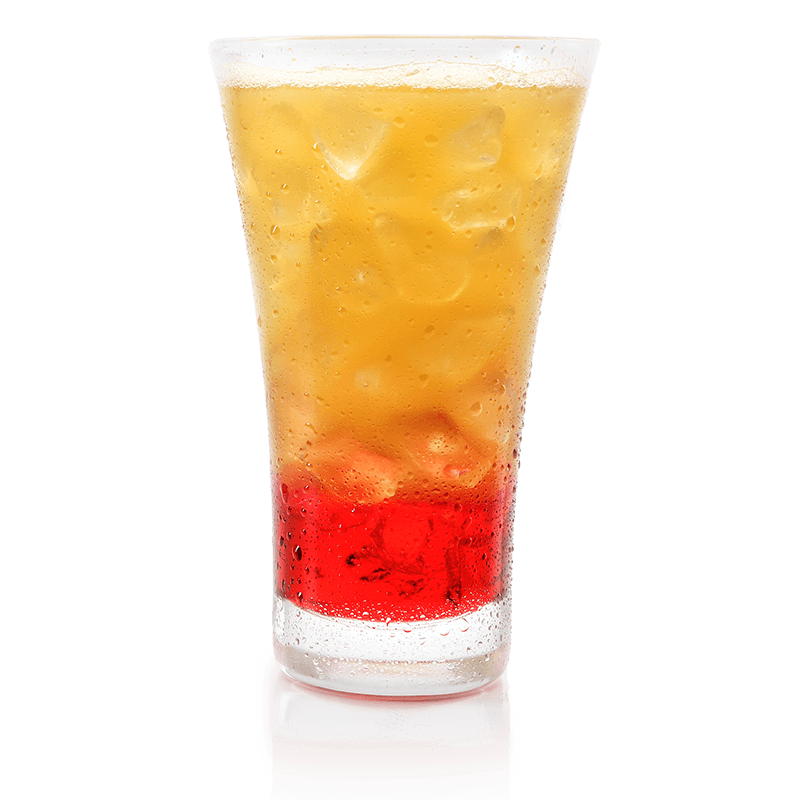Welcome to DU!
The truly grassroots left-of-center political community where regular people, not algorithms, drive the discussions and set the standards.
Join the community:
Create a free account
Support DU (and get rid of ads!):
Become a Star Member
Latest Breaking News
General Discussion
The DU Lounge
All Forums
Issue Forums
Culture Forums
Alliance Forums
Region Forums
Support Forums
Help & Search
Latin America
Related: About this forumThinking about a trip to Cuba? --> Mango harvest Santiago de Cuba begins <--
One hasn't really lived until one has been drunk on the nectar of a Palma Soriano Mango. ![]()
![]()
![]()
Cuba: Mango harvest Santiago de Cuba begins
{snips}
The main fruit cooperatives began collecting mango in the province of Santiago de Cuba, where the harvest will reach its maturation peaks in late May and June this year.
<...>
The greatest concentration of mango in the area of Santiago takes place in the town of El Caney, and the municipalities of Songo-La Maya and Palma Soriano. According to estimates, El Caney will produce more than 13,000 tons of mango this campaign.
http://www.freshplaza.com/article/157937/Cuba-Mango-harvest-Santiago-de-Cuba-begins

InfoView thread info, including edit history
TrashPut this thread in your Trash Can (My DU » Trash Can)
BookmarkAdd this thread to your Bookmarks (My DU » Bookmarks)
3 replies, 1228 views
ShareGet links to this post and/or share on social media
AlertAlert this post for a rule violation
PowersThere are no powers you can use on this post
EditCannot edit other people's posts
ReplyReply to this post
EditCannot edit other people's posts
Rec (5)
ReplyReply to this post
3 replies
 = new reply since forum marked as read
Highlight:
NoneDon't highlight anything
5 newestHighlight 5 most recent replies
= new reply since forum marked as read
Highlight:
NoneDon't highlight anything
5 newestHighlight 5 most recent replies
Thinking about a trip to Cuba? --> Mango harvest Santiago de Cuba begins <-- (Original Post)
Mika
May 2016
OP
StarTrombone
(188 posts)1. Not since the 1st cruise ship came back
And everyone had the Hershey squirts
I'll wait
Mika
(17,751 posts)2. They got the Norwalk virus.. common to cruise ships. Nothing to do w/Cuba. You can just fly there.
There's more and more flights to and from Cuba coming on-line these days.
Personally, I hate cruise ships. I'd rather spend the extra hours in Cuba - and not get sick.
![]()
Judi Lynn
(160,527 posts)3. That's a lot of mangoes, Mika, wow.
[center]



 [/center]
[/center]
Little known fact in the US, that area was the site of a colossal battle in the Spanish-American war!
The Battle of San Juan Hill (1 July 1898), also known as the battle for the San Juan Heights, was a decisive battle of the Spanish–American War. The San Juan heights was a north-south running elevation about 2 kilometres (2,200 yd) east of Santiago de Cuba, Cuba. The names San Juan Hill and Kettle Hill were given to the location by the Americans. This fight for the heights was the bloodiest and most famous battle of the war. It was also the location of the greatest victory for the Rough Riders, as claimed by the press and its new commander, Theodore Roosevelt, who was to eventually become first vice-president and then president, and who was posthumously awarded the Medal of Honor in 2001 for his actions in Cuba.[9] The American press at the time overlooked the fact that the Buffalo Soldiers of the 10th Cavalry and 24th Infantry Regiments had actually done much of the heaviest fighting.[10]
. . .
"Hell's Pocket"[edit]
A company from the Signal Corps ascended in a hot air balloon to reconnoiter the hills. The balloon made a good target for the Spaniards. Hawkins' brigade had already passed by the newfound route[clarification needed] and Kent ordered forward the brigade under Colonel Charles A. Wikoff. Wikoff began heading down the trail at noon, and 30 minutes later he emerged from the woods and was struck by a Mauser bullet. He died as his staff officers carried him to the rear. Lt. Col. William S. Worth, next in rank, assumed command, but within five minutes fell wounded. Lt. Col. Emerson Liscom assumed command and within another five minutes received a disabling wound. Lt. Col. Ezra P. Ewers, fourth in command of the brigade, assumed command. Kent and Sumner lined up for the attack and waited for Lawton's division to arrive from El Caney. Lawton did not arrive as scheduled, and no orders came from either Shafter or Wheeler. The troops waited at the base of the hill, plagued by constant Spanish Mauser gunfire in areas dubbed "Hell's Pocket" or "Bloody Ford".
. . .
The Fifth Corps' newly formed Gatling Gun Detachment participated in the U.S. Army's first use of machine gun fire for mobile fire support in offensive combat.[19] Because U.S. black-powder artillery pieces lacked the range to reach the Spanish positions, Lt. Parker's ad hoc Gatling battery of four .30–40, 10-barrelled guns was originally conceived as providing covering fire for the artillery trains. The Gatling Gun Detachment was ordered to move forward in support of the U.S. assault, and Lt. Parker received orders from his colonel to detach one gun to General Shafter's aide, Lt. John D. Miley, then to take the remaining three guns forward "to the best point you can find".[20] Parker set up his three Gatlings approximately 600 yd (550 m) from the San Juan Hill blockhouse and its surrounding trenches, occupied by Spanish regulars; 800 yd (730 m) away was another ridge-line, also with Spanish entrenchments. Being exposed, the Detachment soon came under attack and quickly lost five men to wounds and others to severe heat stroke. Ordinarily, four to six men were required to operate each Gatling gun. Nevertheless, the crews continued to fire at the Spanish. Lt. Parker's three rapid-fire[21] Gatlings provided covering fire for U.S. forces assaulting both hills.[22][23] Equipped with swivel mountings that enabled the gunners to rake Spanish positions, the three guns poured a continuous and demoralizing hail of bullets into the Spanish defensive lines. Witnessing the assault on San Juan Hill, more than one observer from the U.S. side noticed some of the Spanish defenders fleeing their trenches to escape the intense fire.[24][25] The Gatlings continued to fire until Lt. Parker observed Lt. Ferguson of the 13th Infantry waving a white handkerchief as a signal for the battery to cease firing to avoid causing friendly casualties.[26][27] The American assault then broke into a charge about 150 yd (140 m) from the crest of the hill.[20][28]

The Americans suffered almost five times as many losses as the Spanish.[clarification needed] The Spaniards fought to the knife, losing a third of their force in casualties, but yielding very few prisoners. In view of the large number of U.S. casualties incurred from small-arms fire, the Army decided to update and modernize its small arms arsenal. The .45-70 and M1892 (Krag) Springfield rifles were quickly retired from service in favor of new Mauser-pattern .30-03 (later .30-06 Springfield) M1903 Springfield rifles, while the remaining .30 Army Gatling guns were replaced in 1909 by the M1909 Benét–Mercié machine gun.[citation needed]
Lawton's division, which was supposed to have joined the fight early on 1 July 1898, did not arrive until noon the following day, on 2 July 1898, having encountered unexpectedly heavy resistance in the battle of El Caney. The Americans, aided by Cuban insurgents, immediately began the investment of Santiago, which surrendered just over two weeks later, on 17 July 1898.[citation needed]
Although Roosevelt and the Rough Riders achieved considerable fame with the victory, other soldiers fared less well. Ord never received recognition in the popular press of the day for his actions. The Army turned down[why?] requests for a medal for his heroism from his commanding officer and his commanding general.
. . .
"Hell's Pocket"[edit]
A company from the Signal Corps ascended in a hot air balloon to reconnoiter the hills. The balloon made a good target for the Spaniards. Hawkins' brigade had already passed by the newfound route[clarification needed] and Kent ordered forward the brigade under Colonel Charles A. Wikoff. Wikoff began heading down the trail at noon, and 30 minutes later he emerged from the woods and was struck by a Mauser bullet. He died as his staff officers carried him to the rear. Lt. Col. William S. Worth, next in rank, assumed command, but within five minutes fell wounded. Lt. Col. Emerson Liscom assumed command and within another five minutes received a disabling wound. Lt. Col. Ezra P. Ewers, fourth in command of the brigade, assumed command. Kent and Sumner lined up for the attack and waited for Lawton's division to arrive from El Caney. Lawton did not arrive as scheduled, and no orders came from either Shafter or Wheeler. The troops waited at the base of the hill, plagued by constant Spanish Mauser gunfire in areas dubbed "Hell's Pocket" or "Bloody Ford".
. . .
The Fifth Corps' newly formed Gatling Gun Detachment participated in the U.S. Army's first use of machine gun fire for mobile fire support in offensive combat.[19] Because U.S. black-powder artillery pieces lacked the range to reach the Spanish positions, Lt. Parker's ad hoc Gatling battery of four .30–40, 10-barrelled guns was originally conceived as providing covering fire for the artillery trains. The Gatling Gun Detachment was ordered to move forward in support of the U.S. assault, and Lt. Parker received orders from his colonel to detach one gun to General Shafter's aide, Lt. John D. Miley, then to take the remaining three guns forward "to the best point you can find".[20] Parker set up his three Gatlings approximately 600 yd (550 m) from the San Juan Hill blockhouse and its surrounding trenches, occupied by Spanish regulars; 800 yd (730 m) away was another ridge-line, also with Spanish entrenchments. Being exposed, the Detachment soon came under attack and quickly lost five men to wounds and others to severe heat stroke. Ordinarily, four to six men were required to operate each Gatling gun. Nevertheless, the crews continued to fire at the Spanish. Lt. Parker's three rapid-fire[21] Gatlings provided covering fire for U.S. forces assaulting both hills.[22][23] Equipped with swivel mountings that enabled the gunners to rake Spanish positions, the three guns poured a continuous and demoralizing hail of bullets into the Spanish defensive lines. Witnessing the assault on San Juan Hill, more than one observer from the U.S. side noticed some of the Spanish defenders fleeing their trenches to escape the intense fire.[24][25] The Gatlings continued to fire until Lt. Parker observed Lt. Ferguson of the 13th Infantry waving a white handkerchief as a signal for the battery to cease firing to avoid causing friendly casualties.[26][27] The American assault then broke into a charge about 150 yd (140 m) from the crest of the hill.[20][28]

The Americans suffered almost five times as many losses as the Spanish.[clarification needed] The Spaniards fought to the knife, losing a third of their force in casualties, but yielding very few prisoners. In view of the large number of U.S. casualties incurred from small-arms fire, the Army decided to update and modernize its small arms arsenal. The .45-70 and M1892 (Krag) Springfield rifles were quickly retired from service in favor of new Mauser-pattern .30-03 (later .30-06 Springfield) M1903 Springfield rifles, while the remaining .30 Army Gatling guns were replaced in 1909 by the M1909 Benét–Mercié machine gun.[citation needed]
Lawton's division, which was supposed to have joined the fight early on 1 July 1898, did not arrive until noon the following day, on 2 July 1898, having encountered unexpectedly heavy resistance in the battle of El Caney. The Americans, aided by Cuban insurgents, immediately began the investment of Santiago, which surrendered just over two weeks later, on 17 July 1898.[citation needed]
Although Roosevelt and the Rough Riders achieved considerable fame with the victory, other soldiers fared less well. Ord never received recognition in the popular press of the day for his actions. The Army turned down[why?] requests for a medal for his heroism from his commanding officer and his commanding general.
More:
https://en.wikipedia.org/wiki/Battle_of_San_Juan_Hill
[center]~ ~ ~[/center]
Now I think I could use one or two of those drinkies! Wow.
Thank you, Mika!